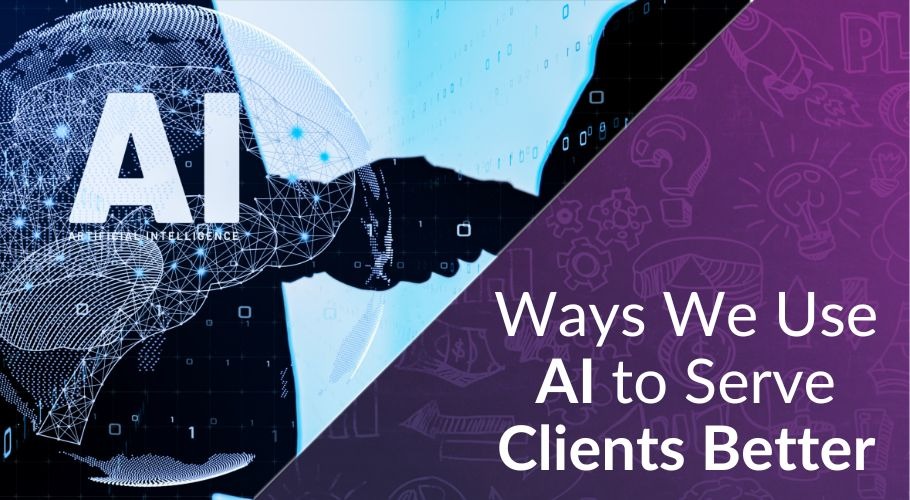You’ve heard the buzz – AI marketing is revolutionizing how businesses connect with clients.
But even though AI offers powerful ways to boost your marketing, many businesses still fall prey to common AI marketing errors that can quickly hurt your brand positioning, and more importantly – your bottom line.
You may have seen competitors gaining ground by using AI-driven strategies, and naturally, you’ve probably wondered if you’re falling behind.
But rushing into the use of AI without considering your brand positioning can lead to some incredibly costly mistakes.
Missteps like using poorly targeted automation, relying on generic content, or adopting impersonal chatbots can leave clients feeling disconnected, frustrated, and undervalued.
And these mistakes have the power to do irreparable damage to your branding.
Because at the end of the day, your clients crave clarity and genuine engagement – not robotic or superficial interactions.
As such, most of your reputation has probably been built on trust, authenticity, personalized connections, and creating meaningful, long-term relationships with clients.
Unfortunately, just a few AI marketing errors can tarnish that carefully curated brand positioning, which can cost you leads, sales, loyalty, and credibility.
But the good news is, when you understand how to leverage AI effectively and authentically, these mistakes are easily avoidable.
By sidestepping these common AI marketing errors, you’ll maintain trust, attract high-value clients, and ensure your brand’s message resonates clearly and consistently.
So, if you’d like to continue exploring the risks of AI marketing, or you’re just wondering why AI marketing may damage your brand positioning, then keep reading to learn more.
Common AI Marketing Errors That Will Hurt Your Brand Positioning
AI marketing tools promise incredible outcomes, including greater efficiency, more leads and sales, and seamless customer interactions.
But when they’re used incorrectly, these powerful tools can quickly harm your brand positioning.
Let’s explore some of the most significant AI marketing mistakes businesses frequently make and how each one can negatively impact your brand.
1) Neglecting Strategic Planning
AI marketing tools provide powerful capabilities, but without strategic planning, they’re not going to be very effective.
Deploying AI solutions without clear strategic objectives is also one of the most common AI marketing errors, and it can lead to disorganized marketing efforts, misaligned messaging, and wasted resources.
And these outcomes can hinder your brand’s ability to effectively communicate its value.
So, if you want to get the most bang for your buck when it comes to AI, you’ve got to plan things out by defining clear objectives, creating well-structured implementation plans, and continually measuring outcomes to improve on what’s not working.
2) Failure to Understand Your Audience
Precision targeting is one of AI’s greatest strengths, but if you don’t know your audience’s needs, motivations, or behaviours, it’s not going to be of much use to you.
And that’s because poorly targeted campaigns tend to waste resources, frustrate potential customers, and can also damage your brand’s relevance and appeal.
With that in mind, you should make sure to conduct audience research, including surveys, analytics reviews, and market analyses, to accurately understand your ideal clients.
In addition, you should regularly update your ideal client profiles so you can leverage AI’s segmentation capabilities based on the most up-to-date, clear, and accurate insights.
3) Poorly Implemented Chatbots
Chatbots are effective tools for providing quick, efficient customer service – but only when they’re used correctly.
Poorly implemented chatbots are prone to issues like overly generic responses, slow interactions, or difficulty understanding customer queries, and this can end up frustrating customers and creating negative perceptions of your brand.
What’s more, clients who experience repeated frustrations may perceive your brand as incompetent or indifferent.
So, to avoid damaging your brand, you should invest in high-quality chatbot development, ensuring that they’ll be able to understand and adequately respond to common customer queries.
In addition, you should regularly update your chatbot software, continually refine your scripts based on customer feedback, and always provide easy access to human customer service representatives as a fallback.
4) Over-Reliance on Automation
Automation streamlines repetitive tasks and enhances productivity, but excessive reliance on it can end up backfiring.
For instance, if customers mainly have automated interactions with your brand, they may feel undervalued and unseen.
Taking this kind of impersonal, robotic approach is a common AI marketing error, and it can erode trust, reduce customer satisfaction, and eventually damage your brand’s reputation.
No matter how you slice it, clients today value authentic relationships and personalized attention, so balancing automated marketing with genuine human interaction is crucial if you want to build lasting relationships with clients.
Automation should complement your team’s efforts, not replace genuine engagement.
To avoid this error, make sure to carefully assess where automation adds real value and, if possible, maintain a human element in all your interactions with customers.
5) Ignoring Data Privacy
In today’s world, data privacy is one of the cornerstones of trustworthy branding.
AI marketing relies heavily on data collection and analysis, which inevitably increases the risk of issues with privacy infringement.
And if you mishandle people’s personal data or disregard privacy regulations, this can lead to costly fines, severe legal issues, and substantial damage to your brand’s reputation.
Moreover, customers tend to become wary when they sense their data isn’t being handled securely.
On the other hand, brands that prioritize and transparently communicate their commitment to data privacy can strengthen client relationships and make themselves more appealing to potential customers.
So, make sure to conduct regular audits to ensure data compliance, clearly communicate your privacy policies, and invest in secure data handling procedures.
This transparency helps to reassure your clients and reinforces a trustworthy brand identity.
6) Generic AI-Generated Content
AI-generated content can save you a ton of time and allow you to rapidly scale your marketing.
But if you choose to rely solely on AI-generated content, you’re running the risk of producing bland, repetitive, and uninspired messaging.
And when content feels generic or detached, it can dilute your brand positioning, which reduces your audience’s engagement, weakens customer connections, and negatively affects the overall perception of your brand.
Finding a balance between AI-driven efficiency and human creativity will help you ensure your content remains engaging, fresh, and consistent with the rest of your branding.
And whatever you do, make sure to carefully edit any AI-generated content to ensure it reflects your brand’s unique style, tone, voice, and values.
By doing so, you’ll ensure each message resonates authentically with your intended audience, which will help to preserve your brand positioning.
Read: 5 Ways We Use AI to Serve Clients Better

While it’s important to learn about common AI marketing errors, you’ve also got to gain an understanding of how to use AI to your benefit.
And once you understand how to do that, then you can apply that knowledge to the work you do for clients, and use AI to serve them better, as well.
With that in mind, this article explores how we use AI to serve our clients better by using it for ideation, research, content creation, and more.
7) Ignoring Brand Voice Consistency
Maintaining a consistent voice for your brand – across all platforms – is crucial for reinforcing your brand’s identity and building trust.
However, AI-driven tools may overlook the more nuanced aspects of your brand’s tone, style, and messaging, and that kind of inconsistent communication can confuse your customers, dilute your messaging, and ultimately undermine the loyalty people have for your brand.
If you want to maintain consistency, you have to clearly define your brand voice and regularly audit AI-generated materials to ensure they meet your standards.
So, make sure to provide thorough training to your team on maintaining this consistency, and continuously refine your AI tools to ensure they accurately represent the distinctive voice of your brand.
8) Setting Unrealistic Expectations
AI tools can significantly enhance your marketing efforts, but expecting dramatic results immediately often leads to disappointment and strategic errors.
These kinds of unrealistic expectations may result in frequent shifts in strategy, inconsistent messaging, and customer confusion, which can weaken your brand positioning and undermine consumers’ confidence in your business.
So, you should establish clear, realistic expectations by setting measurable and attainable goals for all your AI marketing initiatives.
And make sure to keep in mind that successful implementation requires time, extensive testing, and continuous improvement.
9) Lack of Human Oversight
Despite AI’s sophistication, human oversight remains essential.
Without active monitoring, AI can produce errors, miscommunications, or insensitive interactions that can harm customer relationships and the reputation of your brand.
Human oversight provides the necessary context, cultural sensitivity, and immediate corrective action that AI alone cannot achieve.
So, make sure all your AI-driven processes are being overseen by actual human beings who can regularly review outputs, promptly correct errors, and proactively address customer concerns.
What’s more, you should train your team to identify potential issues quickly and provide human interactions whenever AI falls short.
Struggling to figure out how to use AI strategically? Let’s discuss what works best for you in a free 30-minute consultation with me and see how our team can help.
To your business success,
Susan Friesen
P.S. If you liked the article, you might want to subscribe to our newsletter. We publish tons of valuable content to help you learn more about marketing, and subscribing is the best way to ensure you don’t miss out. Additionally, if you’d like to learn more about building a search engine optimized website, click here for our free website guide.







